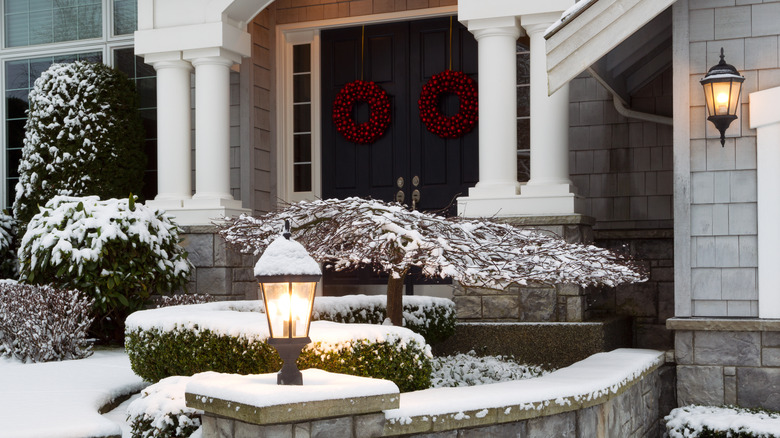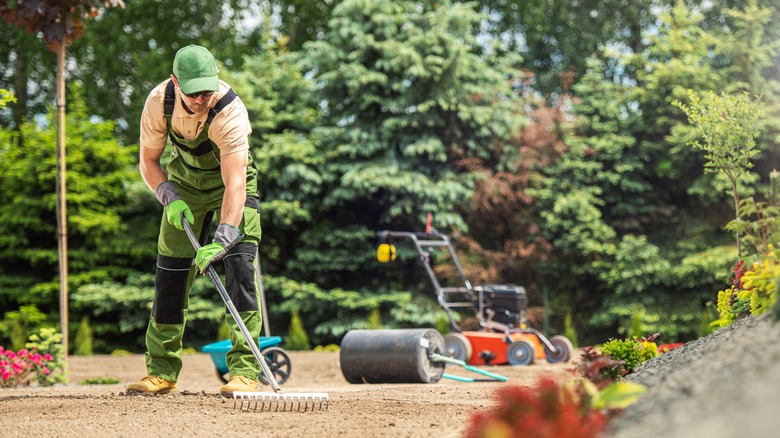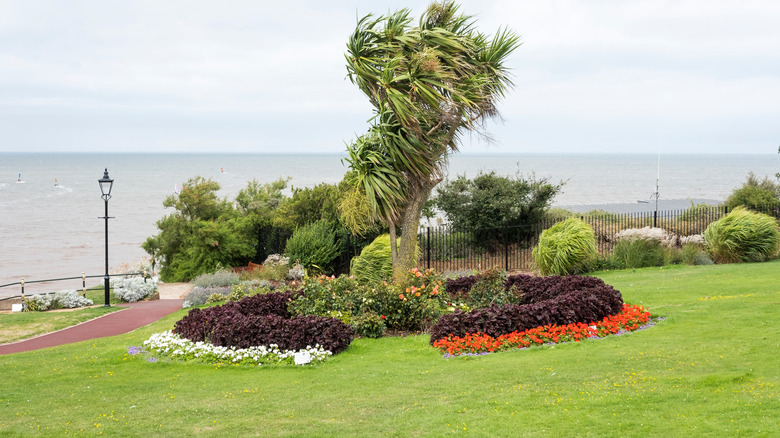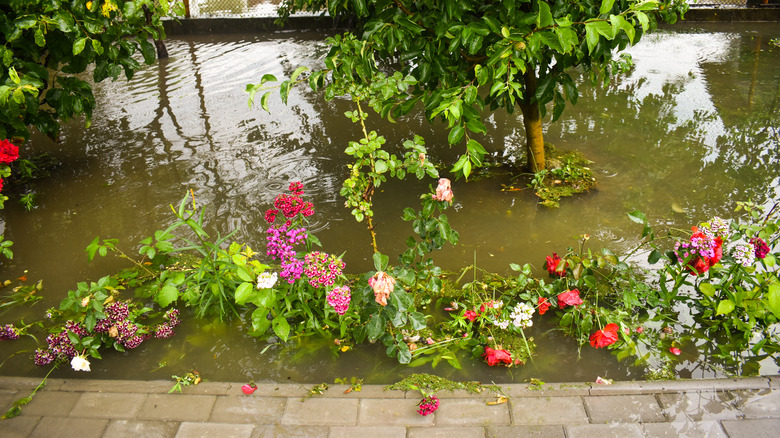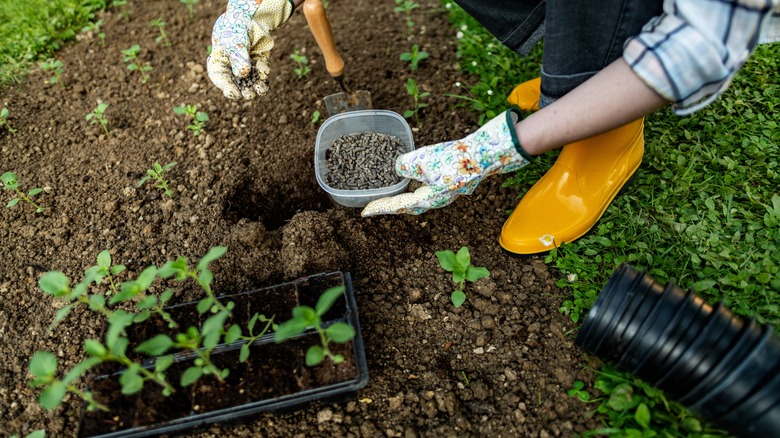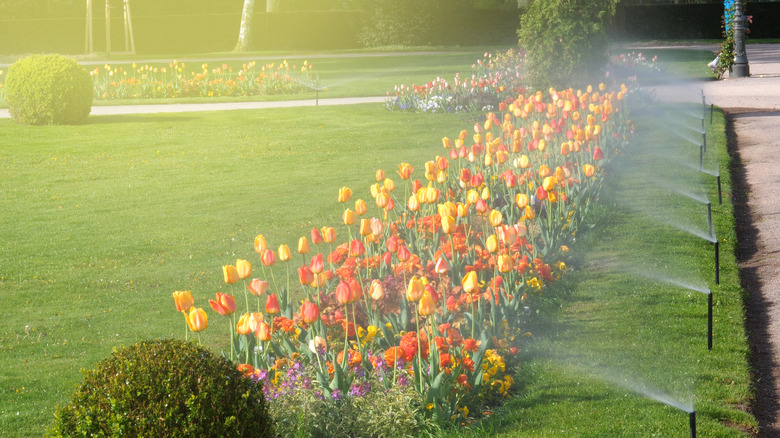The Best Ways To Protect Your Landscaping From Extreme Weather
A good landscape is always a delight to the eyes, and having a well-manicured lawn with beautiful trees and several blossoming flowers is always a desire for every homeowner. Besides that, a well-maintained landscape also can increase your home value by up to 12.7%, via Virginia State University Cooperative Extension. However, while this is true, it is also important to point out that keeping your landscape in tip-top shape requires proper preparation, especially against the worst mother nature has to offer. Extreme weather conditions are a reality, and they will wreak havoc on your landscape if you are ill-prepared.
Whether it is extreme cold, strong winds, or even soaring temperatures, you need the necessary information to help you deal with such tough times. While you might not have control over the card mother nature deals, the good news is that you can do a few things to stay ahead of the situation. Take a look at the following tips to ensure the plants in your landscape continue thriving during and after extreme weather conditions.
Prep for the dry seasons
While drought might not last forever, it will devastate your landscape plants if you fail to intervene. It goes without saying that there is no plant life without water; therefore, during the dry seasons, the only way to keep your landscape lush and green is by providing the plants with water. If you have an irrigation system, you must adjust the schedule depending on the season. Remember, as the temperatures outdoors increase, so does the needs of your lawn and plants.
According to South Dakota State University Extension, plants need up to 1½ inches of water every week, especially during the dry season. While no particular watering schedule fits every home, adjusting your watering schedules at least four times a year will go a long way in making up for the differences in water needs depending on the season. However, if providing the plants in your landscape with continuous and consistent water is not viable, consider investing in artificial turfs that will reduce your watering needs considerably.
Be careful of strong winds
It is necessary to establish that wind is essential for the natural functions of the ecosystem. According to Michigan State University, it is an agent of pollination and helps new plants develop stronger stems. However, despite the benefits of wind on the ecosystem, they also have devastating consequences if they are strong enough. They can easily uproot plants from the ground if not staked properly. Staking is particularly important to young plants for extra strength and support against strong winds.
Apart from the direct damage from the strong gusts, something else you should be worried about is the furniture on your patio. Your outdoor furniture will quickly get airborne in the event of strong winds damaging the plants on your landscape. Before a storm, the wise thing to do is to put all the furniture indoors or ensure they are well secured. This will not only help prevent damage to your property but also reduce the risk of loss or damage to your neighbor's property.
Prepare for excessive rainfall
Water is necessary for proper plant growth; however, just like anything else, too much rainwater also comes with its fair share of problems. Heavy downpours can cause flooding, which is detrimental not only to the plants on your landscape but also to the structures of your home. In extreme scenarios, flooding from excessive rainfall can submerge plants, facilitate soil erosion, and encourage soil nutrient loss through leaching, per The Pennsylvania State University Extension. If flooding is expected in your area, you need to find ways around the effects of excessive water in your landscape.
One way of doing this is to control the water runoff by installing a drainage system. While this might not stop the rainfall, it will help redirect the water to your desired drainage area. Heavy downpour doesn't always need to be a curse; you can take advantage of this situation and harvest as much rainwater as possible to help you during the seasons when you need water to irrigate your plants.
Winter protection
While there might not be much going on in your yard during winter, the extremely low temperatures can easily wreak havoc without proper preparation. Getting ahead of the situation early enough is the key to having a beautiful and healthy landscape after frost. It will be unfortunate if the snow falls before the essential precautionary practices are implemented. One of the first things you need to do is rake the leaves and aerate your lawns. According to A & A Lawn Care & Landscaping, cutting your lawn down to a height of about 2½ inches is ideal. This will make it easier to aerate the lawn and allow you to know precisely how much compost to add if necessary.
You should also consider bringing your potted perennial plants indoors before the first frost. Remember, not all plants have the capacity to brave winter temperatures. However, if you want to have some color in your yard during winter, consider planting flowering plants that will color your garden with beautiful blooms when every other plant is dormant.
Protection from heat
Extreme heat is dangerous not only to humans but to plants as well. Plants arguably bear the brunt of the scorching heat from the sun because most of them are grown outdoors. According to Oregon State University Extension, the ideal temperature for optimal plant growth is between 59 to 86 degrees Fahrenheit. However, when the temperature soars any higher, the health of your landscape plants deteriorates. One of the first effects of extreme temperatures on plants is excessive water loss; you can quickly notice this since the plants will start wilting and shedding leaves prematurely.
According to IOWA State University Extension and Outreach, high temperatures also interfere with the process of photosynthesis in plants. One way to ensure your yard thrives during extreme heat is to irrigate with just enough water. Also, avoid mowing the lawn during this period because it is relatively harder for grass to recover under such extreme conditions. Finally, make an effort to get ahead of pests and diseases that are common during the hot summer months.
